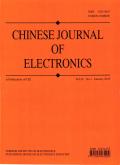Antenna Selection Method for Distributed Dual-Function Radar Communication in MIMO System
IF 3
4区 计算机科学
Q3 ENGINEERING, ELECTRICAL & ELECTRONIC
引用次数: 0
Abstract
Distributed dual-function radar system is an emerging trend in next-generation wireless systems, offering the possibility of improved parameter estimation for target localization as well as improved communication performance. With sufficient resource allocation, the achievable minimum estimated mean square error (MSE) and maximum total communication rate of localization may exceed the intended performance metrics of the system, which may consume an excessive number of antennas as well as antenna costs. In order to avoid resource wastage, this paper proposes a distributed dual-function radar communication multiple-input multiple-output (MIMO) system capable of performing radar and communication tasks simultaneously. The distributed system achieves the desired MSE performance metrics and communication performance metrics by efficiently selecting a subset of antennas, and minimizing the number of transmitting antennas and receiving antennas used in the system as well as the cost. In this paper, the problem is modeled as a knapsack problem where the objective is to obtain the maximal MSE performance and the maximal total communication rate performance at the lowest cost, for which we design a heuristic antenna selection algorithm. The designed algorithm is effective in reducing the time complexity as well as reducing the cost of antenna, and minimizing the number of antennas required.MIMO系统中分布式双功能雷达通信天线选择方法
分布式双功能雷达系统是下一代无线系统的一个新兴趋势,它为改进目标定位参数估计和提高通信性能提供了可能。在资源分配充足的情况下,定位可实现的最小估计均方误差(MSE)和最大总通信速率可能会超过系统的预期性能指标,这可能会消耗过多的天线数量和天线成本。为了避免资源浪费,本文提出了一种能够同时执行雷达和通信任务的分布式双功能雷达通信多输入多输出(MIMO)系统。该分布式系统通过有效地选择天线子集,并最大限度地减少系统中使用的发射天线和接收天线的数量以及成本,来实现期望的MSE性能指标和通信性能指标。本文将该问题建模为以最小代价获得最大的最大均方误差性能和最大的总通信速率性能为目标的背包问题,为此设计了一种启发式天线选择算法。所设计的算法在降低时间复杂度和天线成本的同时,有效地减少了所需天线的数量。
本文章由计算机程序翻译,如有差异,请以英文原文为准。
求助全文
约1分钟内获得全文
求助全文
来源期刊

Chinese Journal of Electronics
工程技术-工程:电子与电气
CiteScore
3.70
自引率
16.70%
发文量
342
审稿时长
12.0 months
期刊介绍:
CJE focuses on the emerging fields of electronics, publishing innovative and transformative research papers. Most of the papers published in CJE are from universities and research institutes, presenting their innovative research results. Both theoretical and practical contributions are encouraged, and original research papers reporting novel solutions to the hot topics in electronics are strongly recommended.
 求助内容:
求助内容: 应助结果提醒方式:
应助结果提醒方式:


